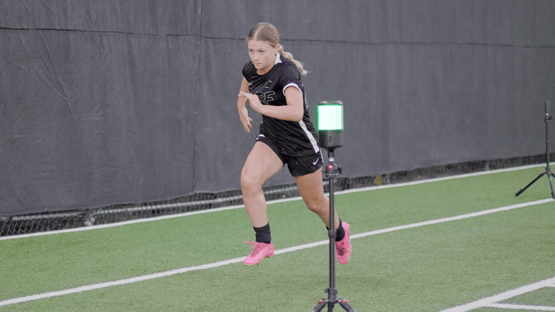Importance of Testing & Data Collection
I’ve gotten a good amount of questions recently from coaches surrounding how often we test at the Performance Center so today I wanted to give a little insight into the importance of testing and how we do it.

When looking at sprint testing, we want to look at it in phases. Ideally we’re testing at the beginning of every phase and at the end of every phase.
So beginning of summer or off-season and at the end of it, beginning of season and end of it - this allows us to see progress and improvement.
We then put a heavier emphasis weekly on monitoring. These are simple tests, more consistently.
One thing we do every week is a ten yard sprint. It’s low cost and low risk. It’s something the athletes can always run despite their schedule.
We then monitor how they’re accelerating on a continuous basis.
If they are fresh or have a few days before a game then we may incorporate a Fly 10 as well, but it won’t be as consistent as the 10 yard.
For the Fly 10 we typically use a 20 yard build into a 10 yard fly. Building up to top speed and holding it for a segment.
This is consistent, but not every week.
The point is that we’re continuously testing.
This obviously becomes way easier having the right hardware. We use VALD SmartSpeed Timing Gates which make it really easy to implement.
The ease of use allow us to test weekly. There are some sessions we need to run through a hundred kids in short period of time, so getting the data uploaded to the cloud automatically is a game changer.
The timing gates allow us to see how the athletes are fluctuating throughout the different phases of the year.
If you don’t have timing gates, I still recommend testing. Even with a stop watch or manual system, you’ll see some of the benefits.
We also use Catapult GPS as more of a load management tool. How much distance, how many accelerations, etc. as well as the intensity side.
Intensity differs based on sport. Soccer typically looks at volumetrics, accelerations per minute for example whereas a sport like football is more neurally driven, high speed distance, distance of accelerations, and more.
As you continuously monitor, it allows you to track day to day, week to week, and year to year.
We'll then ensure all data gets added into the Universal Speed Rating.
You now have data on your athletes from the previous week, from where they were a month ago, and where they were last year at this same time of year. It all ties together, as long as you consistently test and monitor.
Using these insights, we can motivate athletes by showing them improvement, directly inside their USR profiles. We can give upcoming athletes goals to work towards. We can verify to coaches and parents that the work being put in is paying off, and we can help athletes prevent injury by managing the loads they are completing.
Without testing, all of the points above would become extremely difficult.
Then, to capitalize on the value, we ensure all of our data is funneling into one place, one central location for it all to live.
Now that you have data built up, you can start to use the data in creative ways. Have an inner organization competition. Let the athletes compete against their own times from previous years, or have them compete with older athletes times from when they were in the same age group.
But the point remains: Test & Monitor.
Test & Monitor.
--
If you're interested in adding some technology into your training setting, check out VALD Timing Gates or Catapult GPS and you'll get a Spellman discount! Or, if you'd like to learn more about incorporating Universal Speed Rating with your athletes, schedule a 15-min consult here.